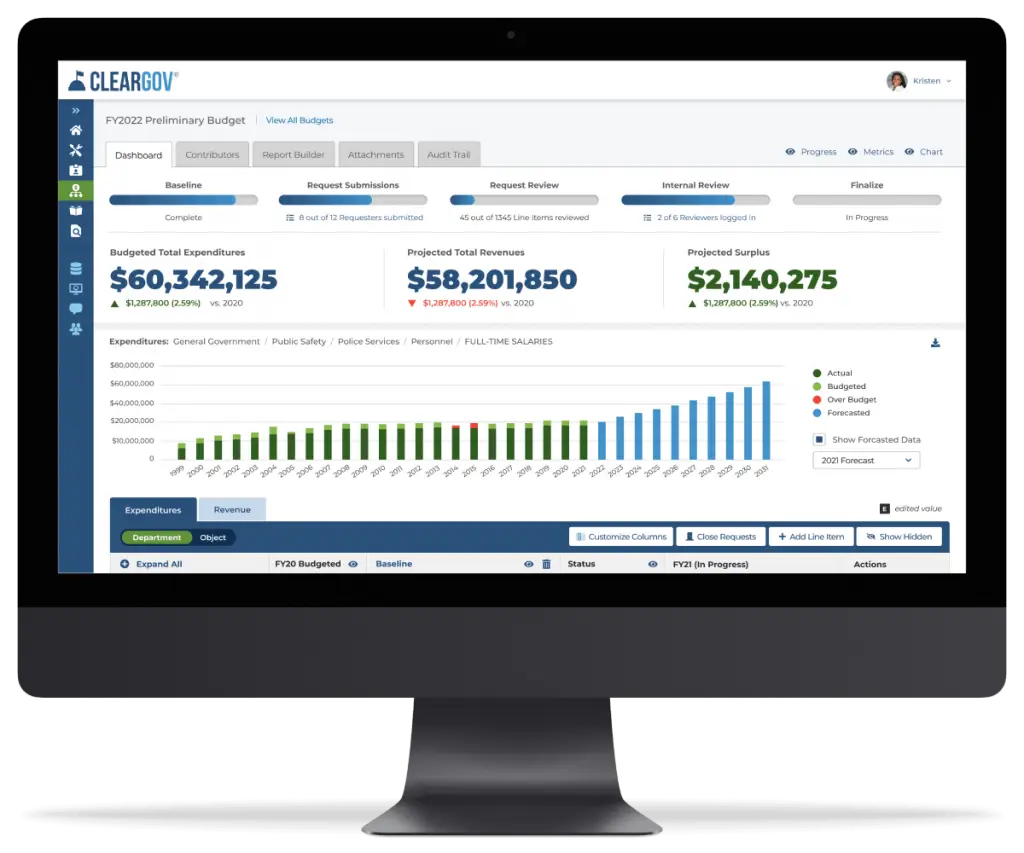3 Ways to Factor Forecasting into Your Annual Budgeting Process AI-driven tech is making it easier for local governments to engage in long-term planningAs a best practice, the GFOA recommends that all governments regularly engage in long-term financial planning. Yet, when we poll attendees at our monthly budgeting webinars, nearly two thirds say they do “little or no forecasting.” Why? It’s complicated. No really, forecasting is complicated. It can also be costly and time-consuming too. And, with an already impossibly long to-do list, most local governments understandably push financial projections to an entirely different list — a wishlist. That said, if forecasting were easier, more affordable, and more reliable, we at ClearGov believe a greater number of municipalities would eagerly factor financial projections into their annual budgeting process. That’s why we built one-click forecasting right into our ClearGov Budgets solution. With ClearGov Budgets, all the complex calculations are performed in the background using something called a long short-term memory (LSTM) recurrent neural network (RNN). I know. It sounds like something you’d see on the sci-fi channel. I told you it was complicated. Without getting too far into the weeds, ClearGov’s forecasting module employs a sophisticated type of neural network used in deep-learning systems to automatically generate accurate forecasts based on current and historical internal budget models. The key word to remember here is “automatically.” That means the AI-driven forecasting module does all the number crunching behind the scenes, so you don’t have to. With just a click — one simple click — ClearGov quickly generates a forecast based on the historical budget data you provide. Here’s how it works: The more historical data you supply up front, the further out ClearGov can forecast — and the more accurate the results. Our algorithm uses an n-2 model. That means that to project one year forward, we need two years of historical data. To produce a five-year forecast, we need seven years of historical data, and so on. To put that in perspective, the GFOA recommends that financial forecasts extend several years into the future. Many of our clients start with five-year forecasts as a best practice while others project as far as ten years out. The good news is that ClearGov does all the legwork. ClearGov Budgets users simply export the necessary reports from their accounting system and we do the rest, uploading and mapping the historical data to our platform so users can start producing financial forecasts from day one — all with a simple click. The ability to quickly create and edit financial forecasting models changes how you approach your annual budgetAn effective forecast allows you to make better budgetary decisions, maintain fiscal discipline, and ensure essential services are available for your community today and well into the future. Here are three ways you can leverage ClearGov to make forecasting an integral part of your next annual budgeting process:
There are of course other benefits to engaging in effective long-term planning, including potentially boosting your municipal bond ratings. As indicated above, few local governments have a robust forecasting process in place. Formalizing yours is a good first step toward improving your ratings and potentially lowering your interest rates. ClearGov Budgets, which includes the easy-to-use forecasting module described above as well as a collaborative budget building tool and robust benchmarking capabilities, is currently available with a money-back guarantee. Now is the perfect time to schedule a personal demo to see how ClearGov’s affordable, cloud-based solution can help you get a better handle on how budget decisions made today will impact revenues and expenditures down the road. Request a demo today and find out how you can try ClearGov Budgets risk-free for one year. Excited to Build Your Next Budget?You could be. Use ClearGov Budgets and your next budgeting cycle will be faster, smoother, and more collaborative than ever before. That’s plenty to get excited about! |
